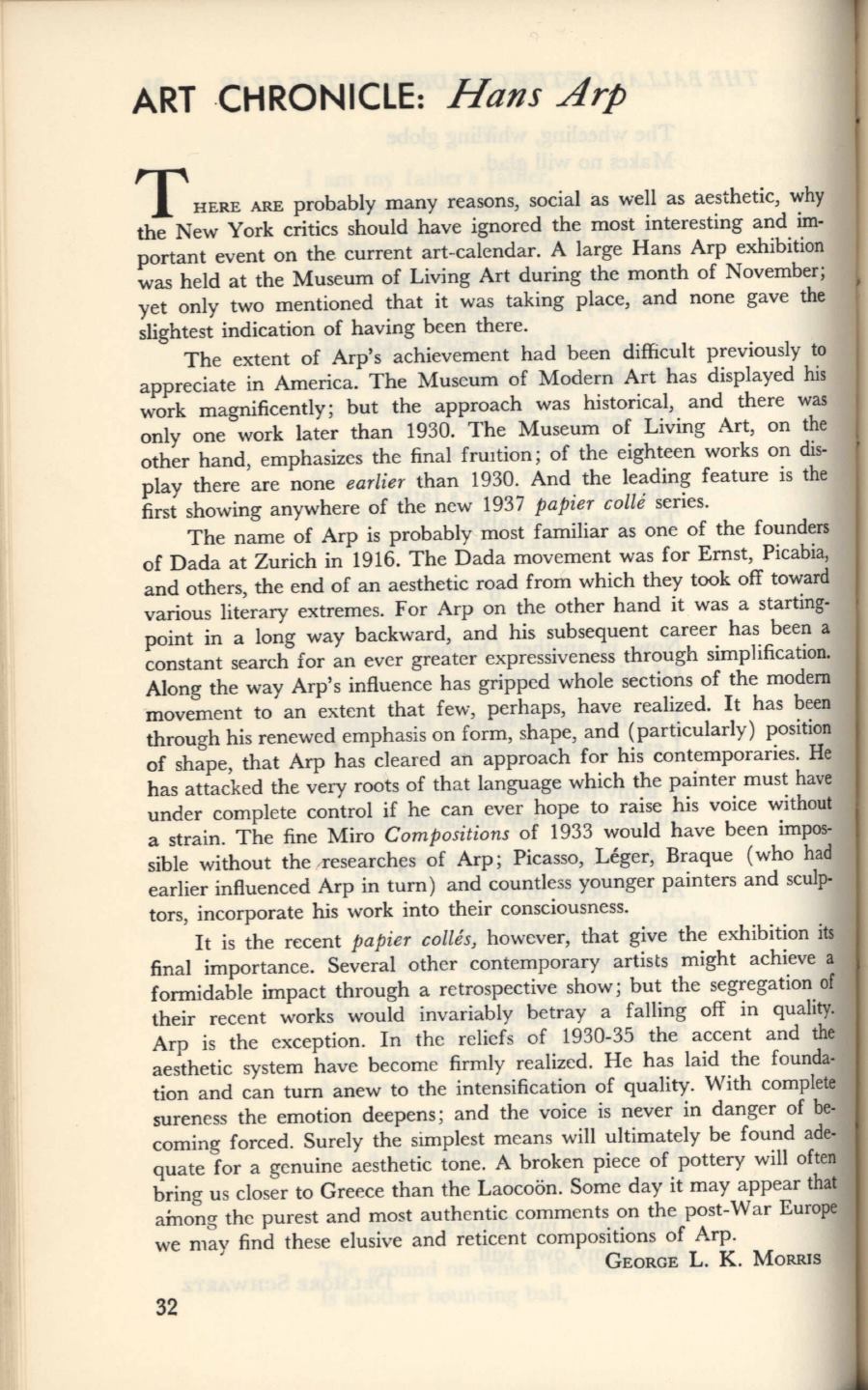
T
HEREAREprobably many reasons, social as well as aesthetic, why
the New York critics should have ignored the most interesting and im-
portant event on the current art-calendar. A large Hans Arp exhibition
was held at the Museum of Living Art during the month of November;
yet only two mentioned that it was taking place, and none gave the
slightest indication of having been there.
The extent of Arp's achievement had been difficult previously to
appreciate in America. The Museum of Modern Art has displayed his
work magnificently; but the approach was historical, and there was
only one work later than 1930. The Museum of Living Art, on the
other hand, emphasizes the final fruItion; of the eighteen works on dis-
play there are none
earlier
than 1930. And the leading feature is the
first showing anywhere of the new 1937
papier colli
series.
The name of Arp is probably most familiar as one of the founders
of Dada at Zurich in 1916. The Dada movement was for Ernst, Picabia,
and others, the end of an aesthetic road from which they took off toward
various literary extremes. For Arp on the other hand it was a starting-
point in a long way backward, and his subsequent career has been a
constant search for an ever greater expressiveness through simplification.
Along the way Arp's influence has gripped whole sections of the modem
movement to an extent that few, perhaps, have realized. It has been
through his renewed emphasis on form, shape, and (particularly) position
of shape, that Arp has cleared an approach for his contemporaries. He
has attacked the very roots of that language which the painter must have
under complete control if he can ever hope to raise his voice without
a strain. The fine Miro
Compositions
of 1933 would have been impos-
sible without the ;researches of Arp; Picasso, Leger, Braque (who had
earlier influenced Arp in turn) and countless younger painters and sculp-
tors, incorporate his work into their consciousness.
It is the recent
papier colles,
however, that give the exhibition its
final importance. Several other contemporary artists might achieve a
formidable impact through a retrospective show; but the segregation of
their recent works would invariably betray a falling off in quality.
Arp is the exception. In the reliefs of 1930-35 the accent and the
aesthetic system have become firmly realized. He has laid the founda-
tion and can turn anew to the intensification of quality. With complete
sureness the emotion deepens; and the voice is never in danger of be-
coming forced. Surely the simplest means will ultimately be found ade-
quate for a genuine aesthetic tone. A broken piece of pottery will often
bring us closer to Greece than the Laocoon. Some day it may appear that
among the purest and most authentic comments on the post-War Europe
we may find these elusive and reticent compositions of Arp.
GEORGEL. K. MORRIS
ART ·CHRONICLE:
Hans Arp
32


